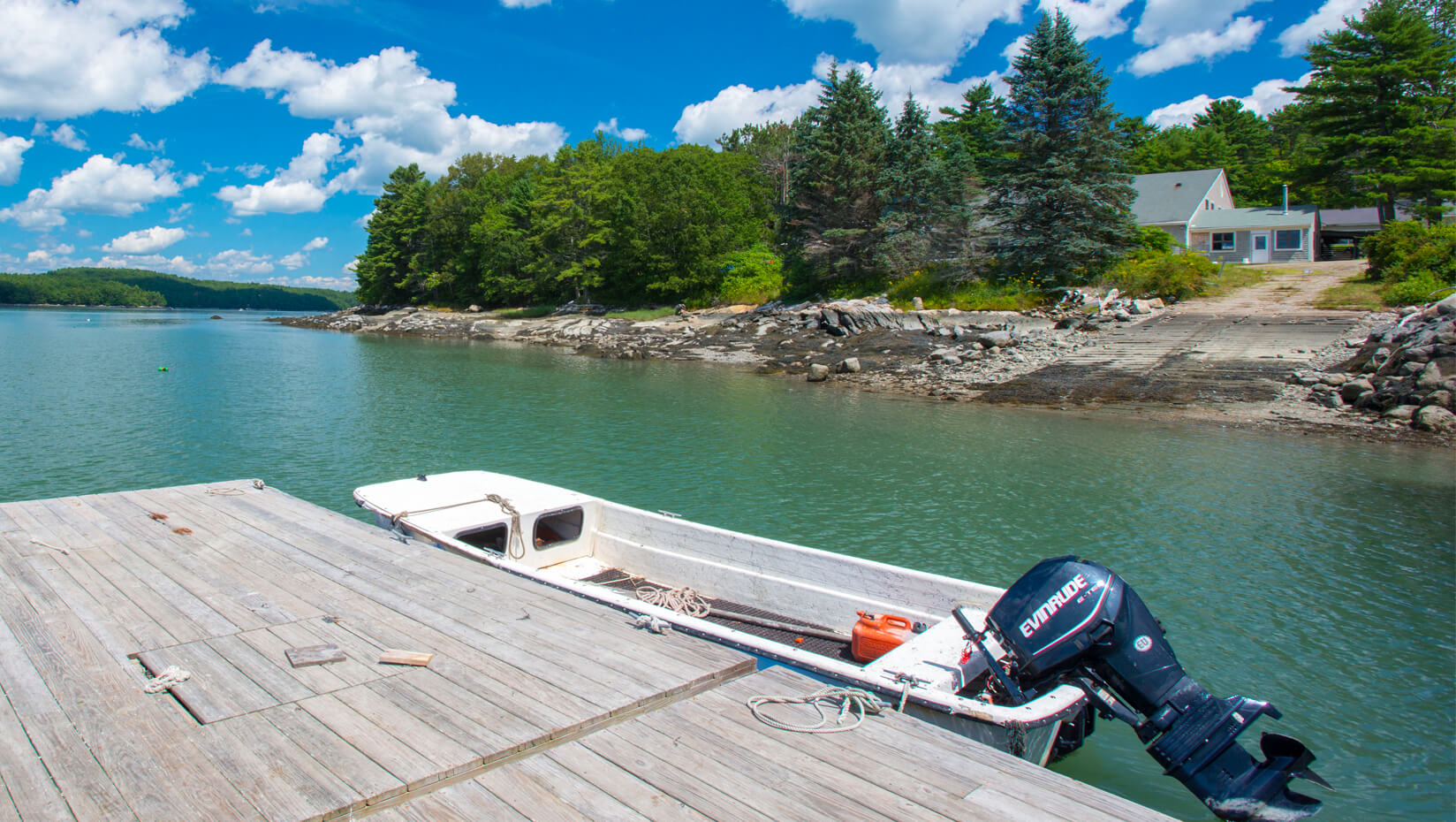
Water quality, lobster management focus of DMC grad students’ research
University of Maine Darling Marine Center graduate students Carl Huntsberger and Whitley Gilbert want their research to support better management of two of Maine’s most valuable natural resources — clean water and lobsters.
Huntsberger was 9 when he began lobster fishing. He knew a legal-sized lobster, known as “a keeper,” is one whose main shell measures between 3 1/4 and 5 inches long. Anything else, including egg-bearing females of any size, had to be put back.
These days, Huntsberger, who grew up in Belfast and earned his B.S. at Roger Williams University in Rhode Island, no longer catches lobsters. He studies them to find a more accurate way to determine a lobster’s age than size alone.
“I want to be able to provide data that will go into management decisions,” he says. “But I don’t want to be in the fishery management office all the time, and I don’t want to be at sea as a commercial fisherman all the time. I want the mix.”
The master’s degree-seeking student in the School of Marine Sciences conducts research on juvenile and adult lobsters in Professor Rick Wahle’s DMC lab. He’s examining whether the number of rings that form on a part of the stomach called the gastric mill relates to a lobster’s age.
“Our goal is to hold them for at least a year and be able to determine if rings are annual, molt-induced or caused by some other factor,” says Huntsberger. “Hopefully it will improve stock assessments for lobster.”
Gilbert, a graduate student in the School of Earth and Climate Sciences, studies nutrient loading in Casco Bay to better understand water quality.
Nutrient loading is caused when upstream pollutants, including fertilizers from lawns and farms, run downstream and eventually settle on the seafloor.
In the Gulf of Mexico and Chesapeake Bay, nitrogen and phosphorus have caused bright green algal blooms that block sunlight and deprive the water of oxygen.
These areas, called dead zones, are associated with large die-offs of fish and shellfish.
While the problem may not be as extreme in Maine, Gilbert pointed out that Casco Bay is next to Portland, one of the fastest-growing cities in New England.
Currently, the model for determining nutrient loading in the bay is based on land use upstream.
Gilbert’s master’s research, funded by the Casco Bay Estuary Partnership, examines other possible factors — including rainfall, drought and storms — by sampling water at the bay’s fall lines, or where freshwater meets saltwater. She compares those findings with those based on the land-use model.
“If we get a better handle on the causes and effects of nutrient loading in Casco Bay, it can help land-use managers make decisions that will keep the water clean,” says Gilbert.
She believes good communication also is key. While an undergraduate student at Iowa State, Gilbert says she worked with farmers who didn’t see the harmful downstream effects that farm runoff had on the Gulf of Mexico’s shrimp fisheries. As a consequence, she says, they didn’t see the need to change their farming methods.
“In the future, I’d like to be an intermediary between science and the farmer,” says Gilbert. “As a scientist you’re not supposed to be an advocate, but more and more scientists have to better communicate their results or they become misunderstood.”
Contact: Melissa Wood 207.479.0660
